

What is Civilization?
How Do We Know What We Know?
Water in Portland
How Rivers Led to Cities
The Settled Versus the Wild
The Friendship of Gilgamesh and Enkidu
The Guardian of the Cedars: Huwawa
The Amazing Tool: Writing
The Development of the Letter S
The Men Who Broke the Code
A Map of Egypt
Social Classes in Civilization
The Ruler of Dynasty XVIII: Hatshepsut
Contemporary Mysteries of the Past


Civilization is many things.
It is the organization of a large group of people. This group could be several dozen or more. Whether it is simple or complex, some form of government fits the organization part. When individuals can specialize in a particular area, they donít have to worry about everything else such as hunting or farming food.
It is also the domestication of animals. Horses can plough a field much faster than a person can. So animals start doing work for people. Animals can also be used for transportation or they can be used for food. Sheep provide wool for clothing.
There has to be some form of communication other than the primitive grunts and groans of the Nomadic tribes. Written language also defines civilization.
Civilization also requires permanent housing of some kind. These could be huts of dried mud, or houses with a foundation, framework and everything. This implies settlement in a good location, such as near a reliable source of water and food.
Back to top

It is difficult to know for sure what happened in the past without making some assumptions. Archeologists use several tools to help them out.
The placement of bones in relation to each other can tell many things. It can tell something about how the person died. If the bones are arranged in an unnatural form, that would suggest they were buried. If they were in a big heap, that might suggest they fell off a cliff.

We can tell if a society had learned to domesticate animals if, for example, there are many sheepís bones next to a personís. We can also determine the age of a bone through radiocarbon testing. All living organisms ingest some form of carbon. Carbon has a little bit of radioactivity. When a being stops ingesting carbon, the carbon starts to decay. We know the decay rate of carbon radioactivity, so we can determine when this being died.
Through DNA testing, we can tell what kind of food the person ate. This can tell us if they had farming or not.
Early literature can help us find the location of some old cities. The Iliad and the Odyssey led to the digging up of the city Troy. The city was thought to be a myth until it was uncovered.
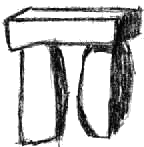
By looking at monuments and structures, we can tell what kinds of tools were developed and being used at the time as well as about their religion. If there are statues of a person, that can tell us about the social organization.
Pottery is very important. By looking at a pot, you can tell if it was made using a potterís wheel or by hand. It is also possible to tell whether it was baked in a kiln or in the sun. Both of these are an important indication of how advanced the civilization was.
The basis of Sanskrit is similar to many European languages. This suggests that the world started with one language, and the language split with the spreading of people. German and English share many words. We know how these languages split. If we use this as a model, we can trace back many other languages and guess when they split.
Back to top

Portland gets most of its water from the Bull Run. The Bull Run is a series of reservoirs and a river which are heavily protected from people so as not to contaminate the water or the natural resources surrounding the water. It is said to be the cleanest source of water in America.
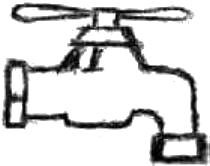
During the fall, leaves and dirt fall into the lakes making the water murky. When this happens, they switch the pumps to the ground source of water until it clears up. This transition is impossible to notice at the home tap. Also, during the summer, this ground source is used because we often use up most of the other water. Over 100 million gallons of water each day are used in Portland. Although this number decreases in the winter, thatís a lot of water to keep flowing to over 700 thousand customers all day. The ground source is basically used as a backup source for Portland.
The waterís quality is constantly monitored so we get good, clean water. There are federal regulations that specify how much of each mineral is allowed for it to be considered safe water.
Back to top

Harnessing the power of a river takes a lot of organization and skill. Someone has to come up with the idea of how to get the water to where the city is. Making a trench to carry the water takes a lot more than one person, but to coordinate hundreds or thousands of people takes someone who can run the project. This separates all people from being equal, and creates different levels of importance. It also takes more than just diggers to do the job. Designers and engineers are needed.
Once the water is in the city, it has to be delivered. But delivered to whom? It would be difficult to deliver the water upstream of where the setup is without pumps. Is water going to be a free service from the city, are the people going to have to pay for it? Someone has to decide these things. If water will have a price, someone has to collect the money, there has to be someone to hold the money and to decide how much of it goes to each person involved in getting the water there in the first place.
All the water coming from the river is not going to be used for the same thing by everyone. Some people will want to use it for irrigation, some for washing clothes, some for washing other things, etc. All these uses of water come from having a civilization.
Back to top

The settled people are more separated from animals and nature. They are connected with animals by their domestication, but not in the same way the nomadic people were connected. They have permanent housing of some kind and they intend to stay where they are. They have found and settled near a good source of food and water and do not want to move around, they only want to expand.
Their knowledge and stories are passed down in writing making use of their written language. They have developed in ways other than weaponry. They have different people doing different jobs, rather than everyone doing everything.
The nomad tribes were the ones who were close to nature and the animals. They were the ones who had no written language, and all their knowledge and stories were passed down only by word. They were the ones who moved from place to place and never settled down to develop as a city.
Because they were always fighting, they had to have good weapons. The nomadsí weapon technology was far superior to any other civilizationís. They developed a bow that could be strung tighter in a shorter bow. This allowed them to be able to shoot farther and carry their bows on horses.
They were known as the horse people. They always traveled and fought by horse. They were feared by many.
Back to top

When Enkidu first hears about Gilgamesh and his aura and power, he is filled with rage. He wants to go to the city and fight Gilgamesh. When Gilgamesh first meets Enkidu outside the marital chamber, he too is filled with rage. And then "stormy heart struggled with stormy heart." They wrestled each other through the city streets. Finally, Gilgamesh brings Enkidu to his knees. After Enkidu has declared Gilgamesh the strongest of all, they "embraced, and kissed, and took each other by the hand." That is the beginning of their strong friendship.
When Gilgamesh hears Enkiduís story and where he came from, he becomes closer to him. They decide to set off on a journey to conquer the guardian of the Cedar forest, Huwawa. Together, they travel fifty leagues every day, only stopping once to eat. They traveled for three days. Enkidu interprets some of Gilgameshís dreams for him. They tell of what will happen soon.
"Then Gilgamesh was afraid, and Enkidu was afraid, and they entered into the Forest, afraid." Their friendship becomes stronger. They are both terrified of the faces of Huwawa. "Two people, companions, they can prevail against the terror." Gilgamesh, weeping, cries out for protection.
Together, despite their terror, they slay the demon. This angers the gods and they send the Bull of Heaven down to attack Gilgamesh and Enkidu. But, the two "brothers" prevail and slay the Bull. This, of course, angers the gods even more, so they decide Enkidu must die.
Both Gilgamesh and Enkidu are devastated when Enkidu becomes sick. Gilgamesh weeps, "Why am I left to live while my brother dies?" Enkidu is more angry than sad. He curses everything that brought him to this fate. But then he realizes that thereís nothing he can do to stop his death, so he takes back his curses. Gilgamesh decides to make a statue honoring Enkidu, and also to dress in skins of beasts.
When Enkidu finally dies after twelve days on his death bed, Gilgamesh continues to mourn for Enkidu. He does as he said and has a statue built. He then goes on a journey, dressed in animal skins, to find the secret to immortality, mourning over his lost friend Enkidu all the way.
Back to top

 Back to top
Back to top

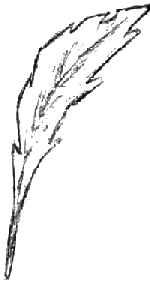
Before writing, everything was passed down by word of mouth. Stories, information, everything. Stories that would fill hundreds of pages now, were memorized word for word. In order for this to happen, people had to have very good memories.
Writing was a major development in the history of civilization. When writing came along, stories could be written to pass down to future generations. Farming techniques could be written down. It was not necessary to rely only on memory to remember the laws of the city. As soon as it was easy to write down lots of information, people used their memory less. It wasnít necessary to memorize entire books.
Writing serves as a reinforcement to memory, as well as for a way to store information long-term. Today, because of writing, we know what a merchant was feeling in a letter to someone who lived 200 miles away from him. Writing is our primary tool for learning about the past.
Back to top

In about 3000 BCE, the Egyptians drew this letter as a tusk. |
 |
In about 1500 BCE, the Semites had their letter which they called Shin, meaning tooth. |
 |
In about 1000 BCE, the Phoenicians squared off the letter. |
 |
In early Hebrew times, this letter changed a little. It was still called Shin. |
 |
In early Ionian signs, the letter was turned sideways. |
 |
The Greeks, in about 600 BCE, called their version of this letter Sigma. |
 |
The Etruscans put the curve back in the letter. |
 |
The Romans, in about 114 CE, gave this letter the form we use today. |
S |
Back to top

Henry Creswicke Rawlinson was among those who helped decipher the ancient writings called Cuneiform. The name, Cuneiform, is based on the Latin word cuneus, meaning "wedge."
In Western Persia, Rawlinson discovered a huge stone, over 300 feet above the road with carvings celebrating the deeds of Darius. Underneath the figures were inscriptions in three different languages. There were about 1200 lines in all. The three languages were Old Persian, Elamite and Cuneiform. With three languages presumably saying the same thing, this made the deciphering a lot easier. However, the top part of each section was too high to copy just by standing on the narrow ledge below. According to his account he managed to copy all the upper inscriptions of the Old Persian by "standing on the topmost step of the ladder, with no other support than steadying the body against the rock with the left arm, while the left hand holds the notebook, and the right hand is employed with the pencil." The top part of the Elamite was even harder because there was no ledge below. He began by using the ladder as a bridge, as the ledge did continue farther along. He ended up hanging on to the cliff as part of the ladder went crashing down. Later he built a stronger bridge and copied all the Elamite inscriptions. In order to get the third section, he rigged up a chair with ropes and pegs going into the rocks for support for a local boy to sit in. He then instructed the boy to make a mold by shoving papier-mâché into the inscriptions. After all this, he had a substantial amount of writing in three different languages.
Rawlinson had already deciphered Old Persian, so along with the help of other scholars, they set to work on the other two. Through much confusion about whether each symbol represented a word or a syllable, they discovered that it was even more confusing. In the extreme case, one sign might stand for the syllables lul, lib, lub, pakh and nar. Conversely, the syllable du could be written 23 different ways.
The Elamite inscription was more puzzling. There were only 110 different signs, compared to the several hundred of the cuneiform. It looked as though most of them represented syllables and only a few represented words. But even with a century more work, Elamite is still only partly deciphered.
Back to top

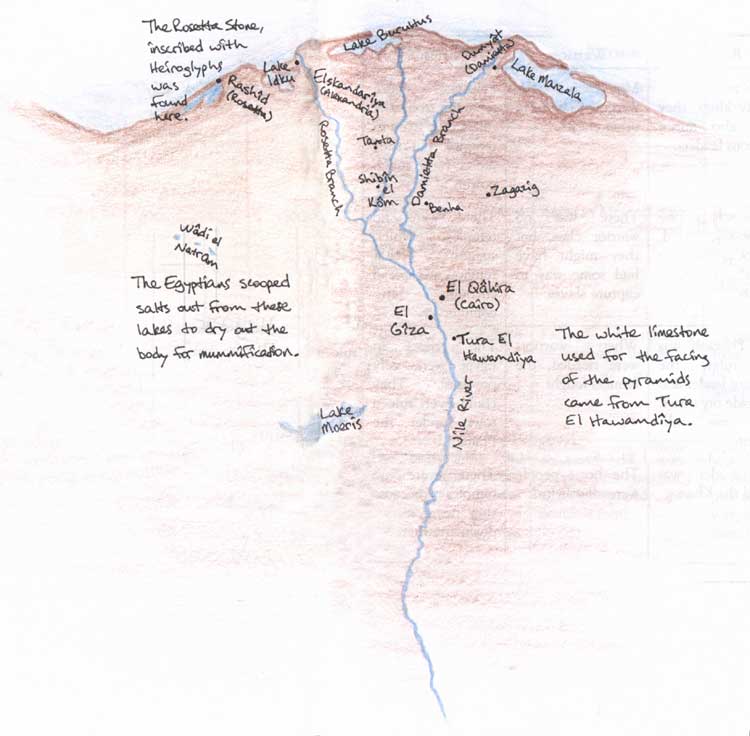 Back to top
Back to top

| |
Rulers |
Warriors |
Priests |
Merchants |
Farmers |
Slaves |
Meso-
potamia |
The rulers were simply kings, they were also minor religious leaders. |
Most of the warriors came from other classes. |
Priests were separate from the rulers, they lived in temples, but they didn't have much power. |
The merchants were just ordinary people, but they had an important role. Also, it was possible to move up in the classes. |
The farmers were just that: farmers. |
The Mesopotamians had slaves. |
Harappa |
There was no one person who ruled, the society was run by merchants and traders. |
There was no warrior class, but they might have had some way to capture slaves. |
There were no temples, which suggests that religion was spread through the community. |
The merchant class had the most power and essentially ruled the town. |
Same as Mesopotamia. |
It is thought the Harappans had slaves, but no one is quite sure. They seem to be a peaceful civilization. |
Egypt |
The Pharaoh was the ruler, the religious leader and the trade organizer. He was all-powerful. |
When warriors were needed, the farmers fought. |
The priests in Egypt were very powerful. They could even rule a town under the Pharaoh. |
There was no merchant class in Egypt. |
Farmers made up most of the people in Egypt. |
Egypt had some slaves from their own people, but also from foreigners. |
Horse
People |
The leader was called the Khan. |
The horse people were all warriors. |
There were no temples because they never settled down anywhere. |
The only thing the horse people traded were slaves. There wasn't much else to trade, everything was stolen. |
Because the horse people were constantly moving around, they couldn't farm. |
When the horse people traveled, they would pick up slaves along the way, use them, then sell them somewhere else. |
Back to top


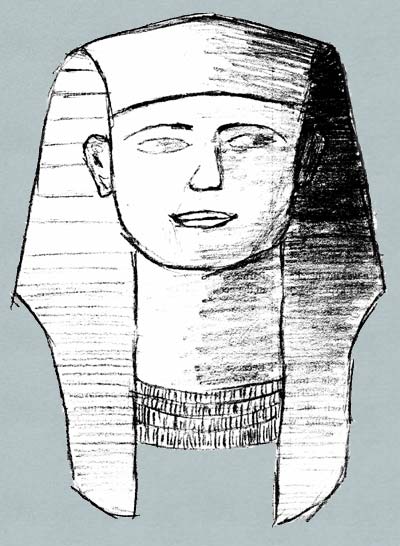
Back to top

One of the biggest mysteries of past civilizations has to do with the Harappans. The Harappa city was built on a flood plain. They had to build their buildings on mounds. But these mounds were built out of broken pottery instead of dirt. They built walls around these mounds out of brick which had been fired in a kiln. The city had wide streets, and there was no sign of any fancy establishment for a ruler. The society was run by the traders and nobilities. Even though there was also no massive temples, there definitely was religion. Each house had its own ritual bathing place. The city had an advanced sewerage system as well as a sophisticated grain storage system. They were the first people to cultivate cotton and used it for clothing as well as for bags to carry goods. There are no signs of mass weapon production, which suggests conquering other civilizations and expanding their city wasn't important to them.
Even though they had significant trade routes to Sumeria, and they were a well developed society, in 1750 BCE, their civilization started to fall apart. It was a slow decay, over a period of 50 years. There is no sign of a massive attack from some other civilization, even though if there had been, it would have wiped them out. But it didn't happen all at once, which also rules out massive flooding or fires. No one is quite sure just how this happened, and still this remains a mystery.
Back to top





 We can tell if a society had learned to domesticate animals if, for example, there are many sheepís bones next to a personís. We can also determine the age of a bone through radiocarbon testing. All living organisms ingest some form of carbon. Carbon has a little bit of radioactivity. When a being stops ingesting carbon, the carbon starts to decay. We know the decay rate of carbon radioactivity, so we can determine when this being died.
We can tell if a society had learned to domesticate animals if, for example, there are many sheepís bones next to a personís. We can also determine the age of a bone through radiocarbon testing. All living organisms ingest some form of carbon. Carbon has a little bit of radioactivity. When a being stops ingesting carbon, the carbon starts to decay. We know the decay rate of carbon radioactivity, so we can determine when this being died.








 Before writing, everything was passed down by word of mouth. Stories, information, everything. Stories that would fill hundreds of pages now, were memorized word for word. In order for this to happen, people had to have very good memories.
Before writing, everything was passed down by word of mouth. Stories, information, everything. Stories that would fill hundreds of pages now, were memorized word for word. In order for this to happen, people had to have very good memories.






 Back to top
Back to top



